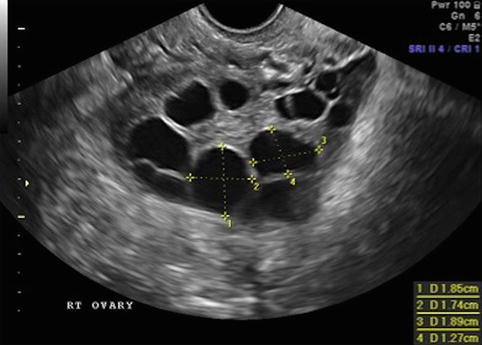This week's Motherhood Musing is a very special one, from the heart. I handed over the reins of NFD to a woman who donated eggs, so that other families struggling with infertility could have children. This has been a very personal journey for her and her family, so any identifying information has been removed; thank you for respecting their privacy. Still, I am sure her personal experiences will move you as they did me.
The idea of egg donation stuck in my mind for years. Here’s how it worked for me:
The idea of egg donation stuck in my mind for years. Here’s how it worked for me:
I applied online and was accepted to the Donor Source- one of many egg donation coordinators in the country. I created a profile with photos of myself at different ages, and my family’s medical history. Intended parents have a coded access to look at profiles of potential donors. They contact the Donor Source, who contacts me and we discuss the match. I don’t learn the intended parents’ names and we are legally obligated not to try to figure out the identities of each other. There’s a long legal conversation over the phone with a Donor Source lawyer. A lot of the legal paperwork to assert that I won’t lay any claim on the future children. The rules vary from state to state, as laws don’t always keep up with technology.
Medically, my experience varied. I worked with a different clinic each time, in four different states. I also had a local monitoring clinic in my hometown, but even that varied each time.
Every time, my blood was drawn. The first time tests for general health, drugs, STIs, and some fertility indicators. Part of the processes required taking fertility drugs; once that began, they checked my hormones each time as well.
Typically, a woman releases one egg each month. Instead, I was given fertility drugs that stimulate the ovaries to prepare around 20 eggs. By the end of the cycle, my ovaries actually feel heavy. It can be like bad PMS, with some cramping and bloating. I was required to be gentle with my body while taking the drugs- nothing beyond mild exercise, no heavy lifting, etc. I joked with my husband a lot during that process. Our phrase was “I’m feeling eggy; I can’t do that!”
The drugs would arrive by mail, in a giant cooler pack. I gave myself shots in the tummy and sometimes in the butt. The tummy shots weren’t too bad - and I valued getting to know a little about how diabetics felt. Some of the large dose medications felt painful when injected. And butt shots just hurt. The longer needle goes into muscle, not just fat.
I gave myself shots at home when I could, but while exploring a new town, I’d often bring my drugs out to dinner or to a show. I gave myself shots in public bathrooms, working hard to keep everything sterile and trying to ignore secret stares. The drugs made a lot of clutter. At the end of each session, I’d have needles and tips to place in my sharps dispenser, wrappers, cardboard boxes and alcohol wipes for the trash.
About three different shots are given for two weeks. During that time, I was monitored almost daily, and my doses were adjusted as needed. When it was getting close, I would be flown to the state where the intended parents live. Perhaps I’d spend five to eight days there with continued monitoring. The final shot, called a “trigger shot” is given 36 hours before surgery (The timing is precise. “Take this at 7:00 pm exactly!”) This doesn’t cause the eggs to leave the ovary, but they are on the verge.
During fertility treatment, they also perform ongoing ultrasounds to measure the size of my follicles. The follicles inside the ovary are stimulated to grow extra eggs out of season. Pregnant women often get an external ultrasound. An internal ultrasound feels a bit more like an annual exam. The “wand” (which looks a bit like a shiny white Star Trek dildo) is inserted vaginally and turned from side to side to view the uterus and the ovaries. I find this part amusing. Not just because it tickles (if the doctor needs to push on my tummy to get the ovary in the right spot).
A companion comes along on the trip for one purpose: to drive me home from the clinic after surgery. They can arrive a day before, or stay the whole week for a free vacation. This was my husband’s favorite part of the donation process. Daily morning appointments take less than one hour each, and then we’d have a full day to explore.
On surgery day, we’d arrive early to a surgical center. I’d wear a hospital gown and socks. They would hook me up to the IV line for a portentous wait.
When it was my turn, I would walk to the room, dragging the IV bag and clutching my gown. The surgical room always had another table with stirrups to slide down into, just like all for an ultrasound. I should be immune to people seeing my personal regions by now, but with three or four people in the room, it would feel like a crowd! The anesthesiologist would start adjusting my drugs. I always hoped they’d make me count down from ten, like in the movies, but they never did.
This surgery doesn’t require any cutting. A large needle is inserted vaginally. It moves through the walls of the vagina to reach the ovary. The needle sucks up the eggs. The procedure is called oogyte retrieval.
I would wake up out of surgery, back in a bed in the prep room. They’d tell me that I walked back but probably don’t remember it. They would ask if I’m feeling pain, and I was not. Maybe just a little ache. On the crowded day, there was another woman sleeping in the bed next to me. She awoke in bad pain. They wouldn’t let her go until she felt better. I think she was still connected to her IV so they could give her pain meds. They comforted her telling her she was an over-producer and got many eggs. She told me something about, “at least that’s step one over with.” It didn’t occur to me until later that she was older than I was, and probably not a donor, but someone on the hard road of trying to become a mother.
I was sent off with pads- there’s just a tiny amount of bleeding- and my husband to drive me home.
Take it easy. Don’t drive, don’t do anything strenuous, and don’t make any major life decisions today. Don’t have sex. (Condom sex is okay for until my next period- the next two weeks.) Keep in mind that they didn’t get every single egg, and a pregnancy now is likely to result in a litter of children.
Each time, we got one night of rest, then a flight home. There’s a lot of aftercare guidance, including a five day antibiotic to take and a firm request to call them first if I’m in pain or having any problems. My insurance from the legal agreements covers normal post-op problems.
For intended parents, this is only a small part of the total process-and cost!- for eggs. They also pay for a fee to the donor; for the fertility drugs; and for the donor’s flights, hotels, car rentals and expenses during the time around the egg retrieval. After that, the IVF process has many other steps and expenses.
Some people have had weird reactions to hearing about my donation. I feel some anxiety about that; I have mostly kept it personal.
Otherwise, I didn’t have many emotional concerns about donation. I was excited to do it, and grateful for the unique life opportunity. I am not attached to my eggs or my DNA, other than to offer best wishes. I focused on the science side, though I was startled into a connection during my first cycle, first visit with the doctor.
He said, “You are going to make some very sad people very happy.”




Post a Comment